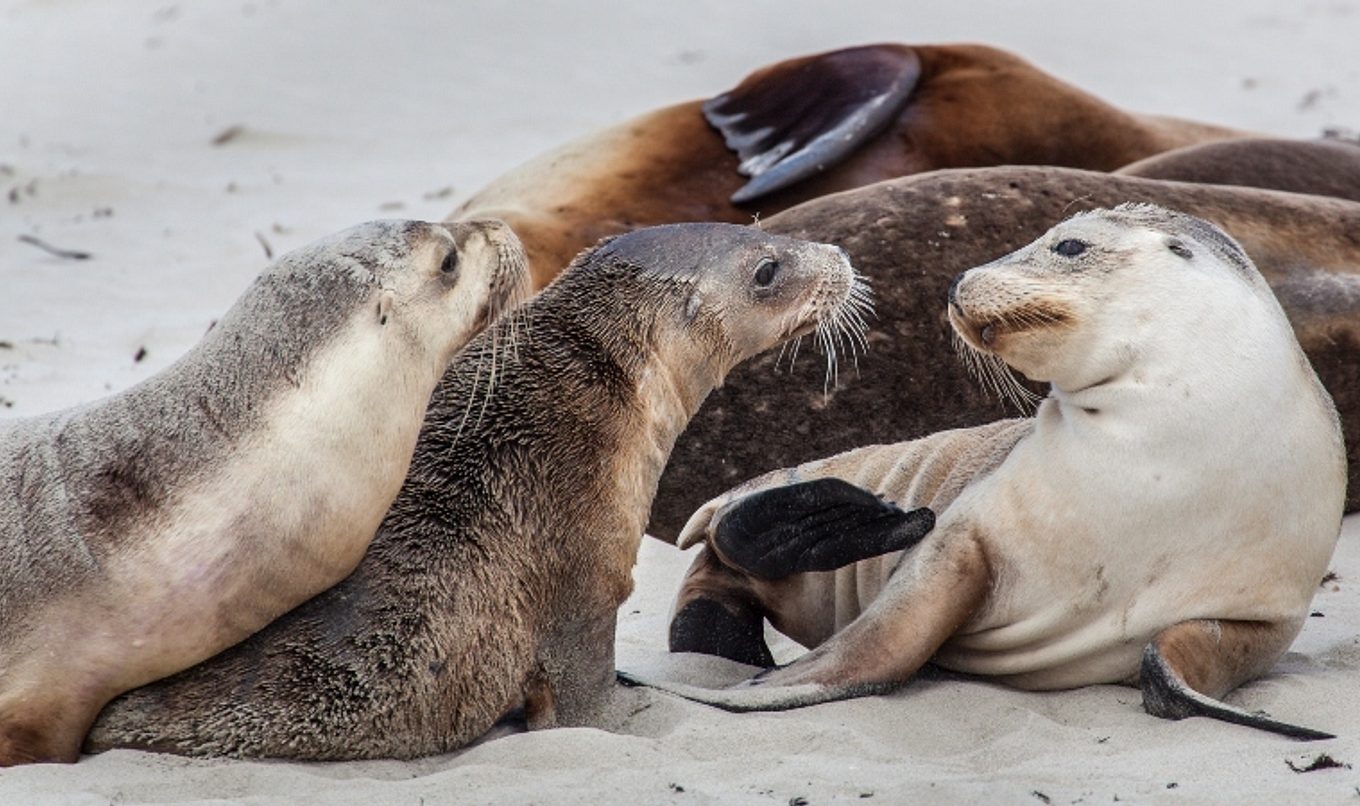New technology reveals higher than expected sea lion numbers
A combination of unmanned aerial vehicle (UAV) technology and photogrammetry software has seen researchers detect greater than ever pup numbers during successive Australian sea lion breeding season surveys in the Great Australian Bight.

The capabilities of the remote sensing technology has allowed researchers to visually access and map sea lion colonies at the base of 90 metre cliffs for the first time.
Australian sea lions have recently been nominated to have their conservation status under the Environmental Protection and Biodiversity Conservation Act 1999 (EPBC Act) uplisted to Endangered as there is evidence of significant population declines across their range.
However, this combination of technologies now provides precise, reviewable data for some of the most precariously placed and remote colonies in Australia.
The Bight is one of the last strongholds of the Australian sea lion with 80 per cent of Australia’s population found in South Australian waters.
The sea lions rest, breed and play in isolated colonies along the Bunda Cliffs and on offshore islands. To feed, adults leave on multi-day foraging trips that often take them into offshore waters of the Great Australian Bight, Western Eyre and Murat Marine Parks.
To better understand the population dynamics of the species, National Parks and Wildlife Service South Australia (NPWSSA) in partnership with Parks Australia conduct pup counts every breeding season.
Marine Coordinator for western Eyre Peninsula with NPWSSA Dirk Holman said every year, researchers have had to overcome the challenges of sheer cliffs and isolated rocky islands to count new pups.
“The information gathered through the survey provides critical insights into how this threatened species is faring and how park managers can address existing and emerging threats,” Dirk said.
“This year, using the combination of drones and photogrammetry software, we can comprehensively ‘see’ colonies along the Bunda Cliffs for the first time; we can look around headlands, behind rocks and into caves, meaning pup counts are more accurate.
“This accuracy has seen us able to detect approximately 300 per cent more pup numbers and total individuals, as compared to earlier results from the traditional cliff top surveys.
“These results are really encouraging and shows that the more cutting-edge survey method is improving count accuracy.
“This new method can be easily conducted multiple times during a breeding season, meaning we can access near-continuous data which will allow us to detect population changes more quickly and more accurately.”
At the Bunda Cliffs, the research team complete three surveys every breeding season, photographing between 16 and 23 colonies each time. At Nuyts, they survey every island twice during the breeding season and also complete traditional ground counts of pups. This allows the team to compare survey methods.
Dirk explained said the Australian sea lion is Australia’s rarest seal species, which is why the annual survey is so important in understanding their population.
“Currently listed as Vulnerable under the EPBC Act 1999, the recovery of the population is at risk from marine debris, habitat degradation, prey depletion, disease, human disturbance and as bycatch in commercial fishing operations,” Dirk said.
“Population recovery is hindered by a complex life history which includes an 18-month breeding cycle, high pup mortality, and extreme female site fidelity, where females only return to their colony of birth to breed. This means each colony is essentially a closed population, where declining colonies will not be replenished with sea lions from other colonies.
“Therefore, it’s vital that we continue to monitor their numbers. Australian sea lion colonies are known to undergo seasonal fluctuations in pup production, so an important aspect of this long-term monitoring is understanding what changes are in response to pressures and what changes are part of normal seasonal variations.”
The annual Australian sea lion survey will feature in an IMAX documentary film, narrated by Sam Neill which has already screened in the United States and Canada and will be available in Australia in January.
For more information on the project visit: https://parksaustralia.gov.au/marine/parks/south-west/great-australian-bight/. For information on the film visit: https://www.sealionsfilm.com

